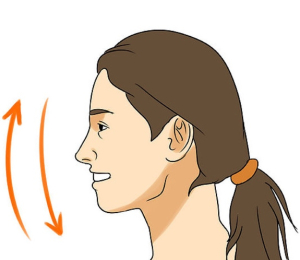By Dr. Ken Broda Bahm:

Nodding your head up and down means “Yes.” At least in our culture it does. And world travelers will know that this one thankfully translates to nearly all other countries and cultures as well. There are exceptions, like one country I visited a couple of times on consulting trips: Bulgaria. There, shaking your head up and down, our “Yes,” actually means “No,” and shaking your head from side to side, our “No,” means “Yes.” And if you ask me if that creates the potential for confusion, I’d nod my head…or shake my head “Yes.”
But sticking with the dominant cultural tendencies, the affirmative head nod is a useful and positive form of nonverbal communication. And we now have proof from the researchers that it works. Social scientists in Japan (Osugi & Kawahara, 2017) used animated clips of figures either nodding affirmatively, shaking their heads negatively, or remaining motionless. They found that the nodding head motion significantly increases ratings of subjective likability and approachability. And rather than just enhancing appearance, the positive head-nodding is perceived to indicate a better personality on the part of the target. That stands to reason: It is easy to think well of someone who is nodding in agreement. For that reason, and with some important caveats, the head nod is a good tool for communicators in the courtroom, including advocates, questioners, and witnesses.
For the Advocate: Nod to Reinforce the Positive Parts of Your Message
When you are standing before your judge or jury, that audience is both watching and listening. For that reason, your physical delivery should complement the words you are saying. Good nonverbal communication should act like a highlighter in reinforcing some sections of your verbal pitch to make them more punchy and memorable. While it is never a good idea to continuously nod like a bobble-head doll (if it doesn’t fit the content, it is confusing), an occasional nod can help reinforce the content. “And was there a reasonable explanation [nodding ‘yes’] for what she did? The evidence will show that there was.”
For the Questioner: Nod to Break Down Barriers and Draw out a Witness or a Venire Member
As the research shows, the head nod is dynamic. Rather than being just an isolated communication behavior of the speaker, it is instead an interaction between speaker and listener. For that reason, if used with a fair amount of discretion, the head nod can be a tool for influencing the person responding to your questions. It can be a way to reduce the threat you seem to pose and a way to encourage the witness to relax. A nod during their answer suggests that they’re doing okay and implies that they should keep going. Like the advocate’s nodding, however, it needs some subtlety: If it is too obvious, it looks odd or manipulative. And with your own witnesses, in direct examination, for example, head-nodding is best avoided, because you don’t want to be seen as nonverbally coaching the witness on the correct answer. But with the other side’s witness, nodding can be a way to make yourself appear more friendly and open, and that might help them to drop their guard.
For the Witness: Nod at Times, but Don’t Confuse the Affirmative Nod With the ‘Yeah, I Get It’ Nod
For a witness, in either deposition or trial testimony, the best advice is to exercise far greater care with the head nods. For one thing, remember that the nod isn’t recorded in the record, so by itself, it doesn’t count as a “Yes.” But the more common problem is that witnesses who are often highly focused on understanding the question as it is being asked, will often nod their heads to convey, “Yes, I follow,” “I understand what you’re asking,” or “I do know the answer.” I have seen witnesses in practice sessions who will nod affirmatively all the way through a question before finally saying, “No” as their response. In that instance, they’re just indicating comprehension, or perhaps mirroring back the questioner’s nods, but it can obviously create a mixed message.
So, like all other facets of nonverbal communications, it helps to keep the head nod in mind as one of your tools, as long as it remains a supplement and not a distraction. And, if you’re testifying in Bulgaria, then it’s completely different.
______
Other Posts on Nonverbal Communication:
- Don’t Worry About the Jury’s Eye Contact (Worry About Your Own)
- Avoid Rising Intonation?
- Don’t Put Too Much Fizz in Pop Psychology
______
Osugi, T., & Kawahara, J. I. (2017). Effects of Head Nodding and Shaking Motions on Perceptions of Likeability and Approachability. Perception, 301006617733209.
Image credit: Wikihow